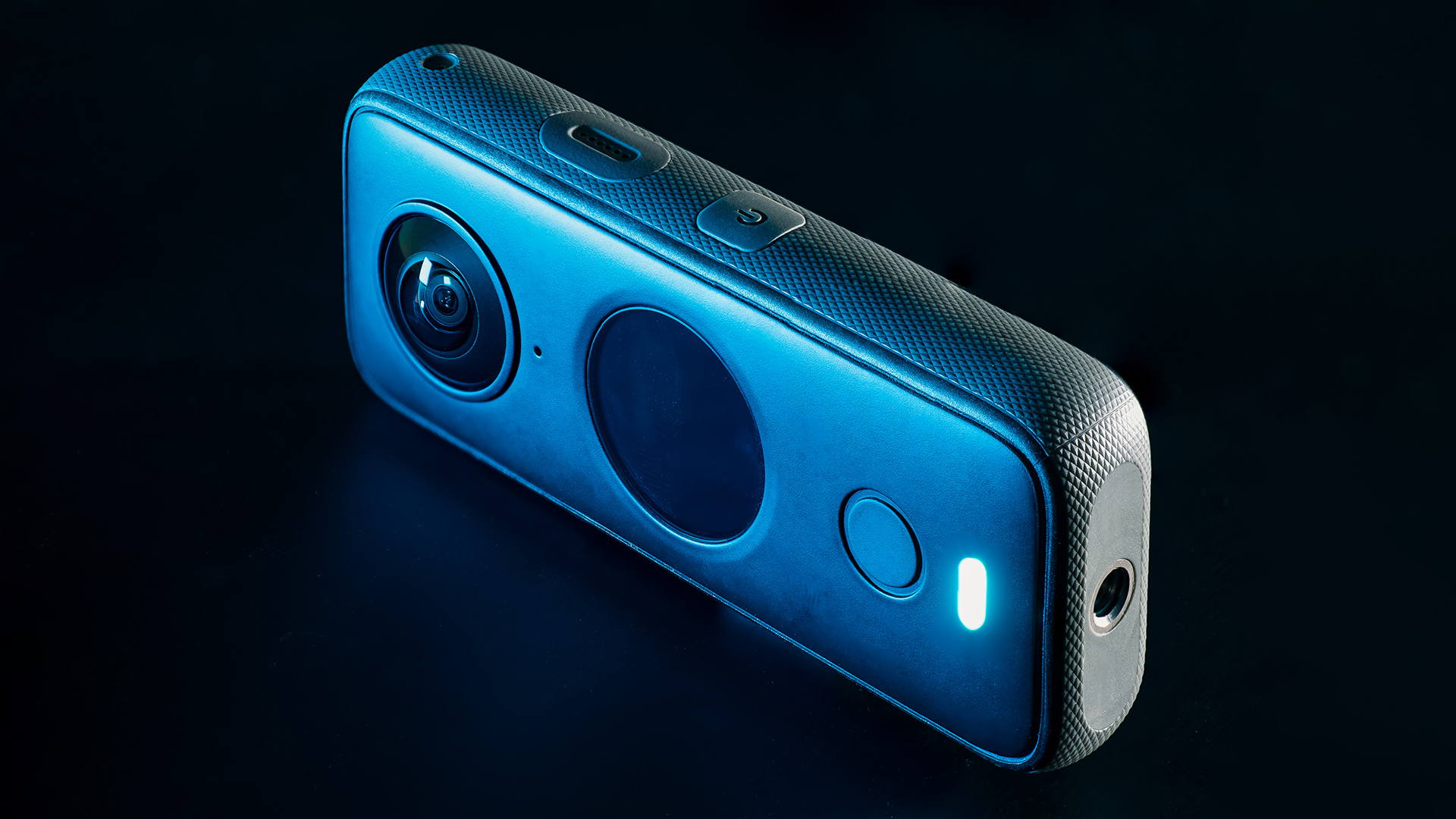
Insta360 ONE X2 review. Insta360 announced the new ONE X2 360 camera this week. Here’s our in-depth review of this major new update to the company’s seminal camera.

The ONE X has become one of Insta360’s most popular cameras. In the last year or so some of its thunder has been stolen by the ONE R modular action camera, but the ONE X still has its fans. The reasons for its popularity are simple. It was very easy to use, it had a slender, easy to hold design, and it was possibly the first consumer based 360 camera that actually produced a good quality picture without the need to go through a manual stitching process.
For these reasons the ONE X has remained popular despite having been superseded by more newer and more advanced models. However, Insta360 has now updated the camera. The ONE X2 takes everything that was good about the ONE X and adds some highly desirable new features.
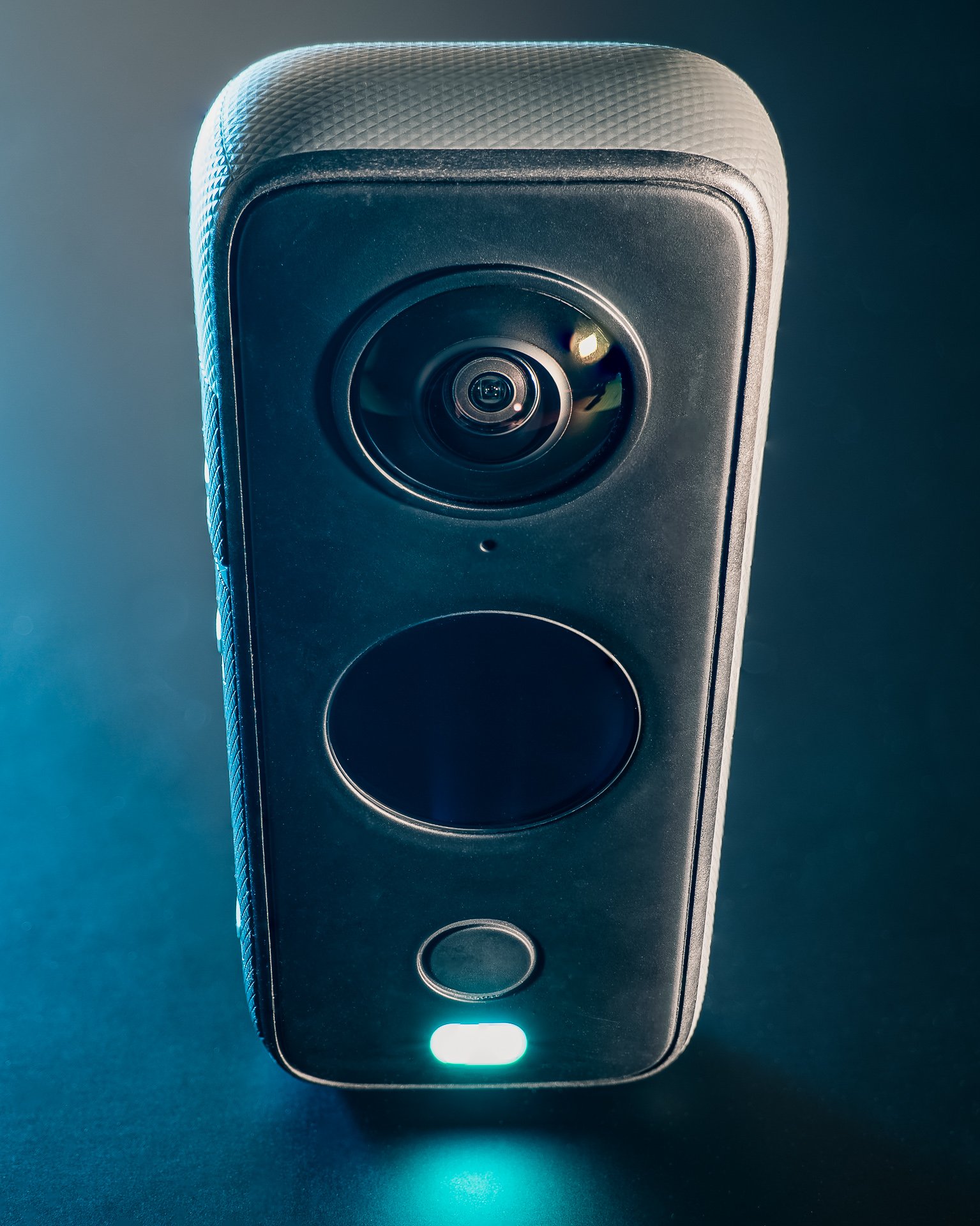
Insta360 ONE X2 new features
The ONE X2 outwardly appears very similar to the original camera, but there are some very notable differences, both internally and externally.
Externally the biggest difference is a textured grey surround going around the body. This makes for a nice grippy surface for handholding. But you’ll also notice that there’s no external USB-C port. This is because everything is now waterproof. That’s right, one of the most requested features for the ONE X is here, and the X2 can be submerged up to a depth of 10 metres without the need for an additional case.
The 360 video won’t work well like this, but it does mean that you now do not have to worry if you get caught with your camera in a downpour or it takes a dunking during the course of capturing the action.
The battery and USB-C port are now behind water sealed compartments. The battery itself is now much larger than the original camera, which was 1050mAh. The battery in the X2 is 1630mAh, which now drives the camera for a claimed 55% longer duration.
The round display screen on the camera body looks very similar to the original camera, until you power it on. The display on the X2 is now a full colour preview display, which can be rotated around to check framing and camera position. The original camera needed hooking up to a smartphone in order to preview the footage. That limitation is no longer present on the X2, making it much easier to use on its own.
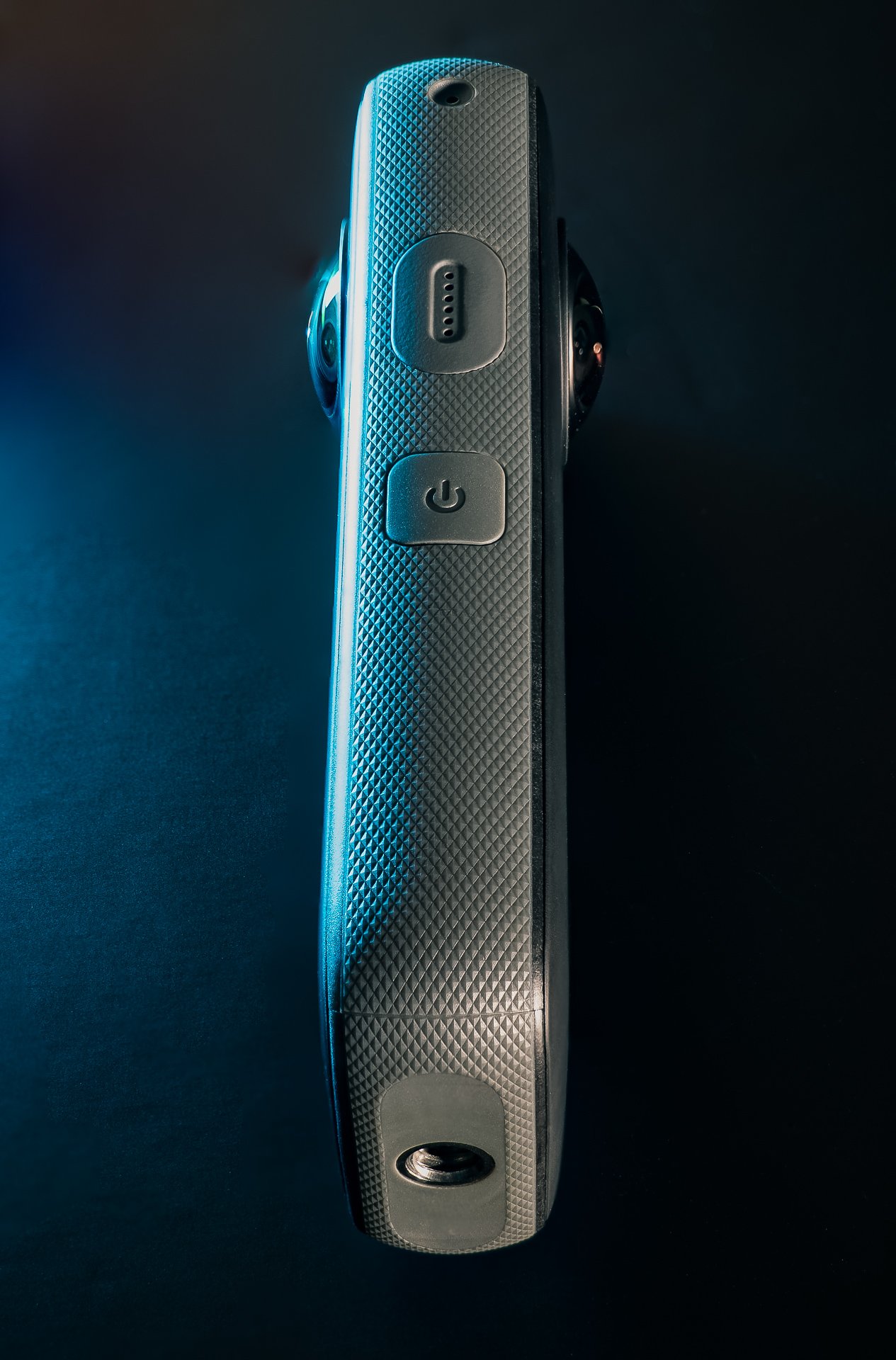
ONE X2 resolution and filming modes
The resolution on the X2 remains at 5.7K, with 4K being available for 50p and 3K making 100fps shooting possible, albeit with a noticeable reduction in captured detail. Another major difference with the X2 is that you can now record with H.265 compression in 360 mode.
A brand new shooting mode is Steady Cam mode. This is similar to Hero mode on the GoPro MAX, and lets you use the camera in a very similar fashion to a standard action camera, but with some pretty neat advantages.
This mode sets the angle of view at 150 degrees and you can tell the camera whether you want to use the front or rear camera, recording up to 50p with the resolution of either 1440p or 1080p. The codec for Steady Cam is set at H.264, unlike the 360 mode that can have the newer H.265 applied.
Steady Cam would appear to be a really useful mode to use however. Full Flowstate stabilisation is available, but much like 360 video the horizon level in Steady Cam can be locked. This means that no matter what you do with the camera, the video will stay both rock solid in terms of smoothness, but also in terms of horizon level. For people who want the stabilisation advantages of 360 video but without the reframing hassle, this mode would appear to be a great solution.
Just like with the ONE R, when you use this mode you can choose the virtual lens you want in post rather than having it baked into the recording.
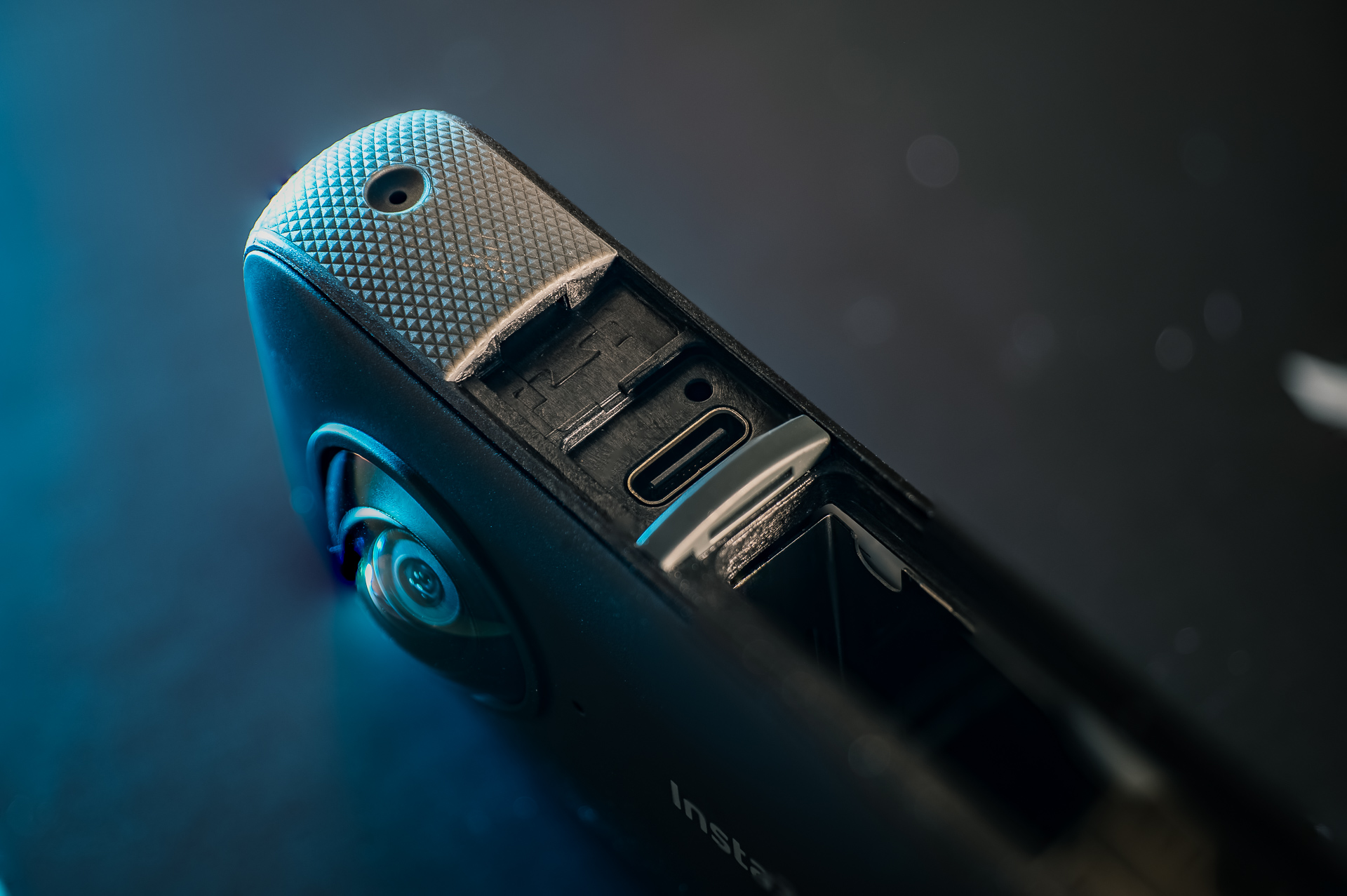
Build quality and first impressions
The ONE X2 is one very nicely finished camera. It both looks and feels like a very high quality device with a good finish all round. The materials used for the body feel good quality and the device itself has a good ‘weight’.
The ONE X2 is a totally different animal from the ONE R, having being designed from the ground up as a pure 360 system for the most part. This means it has a ‘vertical’ form factor, and a 1/4” screw mount on its base for attaching to 360 compatible accessories. Because the ONE X2 doesn’t have a traditional action camera style form factor it is less suitable for helmet or head mounting. For certain it can be mounted like this, but it isn’t quite as practical as something like the ONE R.
However it does make the ONE X2 suitable for use as a general lifestyle camera that can do action duties when needed. The thinner form of the X2 has some advantages from the point of view of being a 360 camera. The main one is that its thinner body should offer better stitching. It should also mean that the stitch line is ‘closer’ to the camera. This should mean that hand held shots with the camera on a stick should make your hand look more like a hand rather than a weird stump!
The circular LCD touch screen might seem like design over function, but with the X2 being a 360 camera it actually works very well. It is bright and easy to read, and the interface is responsive, as well as being clear and easy to understand. The X2 is not a camera where you have to spend a load of time fumbling around for different settings. Everything is easy to see and access.
Using the ONE X2
Startup time is around 4 seconds, so it isn’t the fastest off the block. However the ONE R also had a slow startup time when it was first released, but it was improved dramatically via a firmware update. And if there’s one thing that Insta360 are fast getting a reputation for, it’s listening to users and responding with a fast cycle of firmware updates to address issues and also to add cool new features.
The circular LCD screen is small, but it is clear when handholding the device for framing in the Steady Cam mode, and it is nicely responsive to the touch in 360 mode when you want to pan around to check stitch lines when mounted. A big bright light at the bottom of the device is a clear indicator of when the camera is recording. This light appears on both the front and rear of the camera, so you can see when it is operational no matter which orientation it is in.
With most action cameras I am a fan of the GoPro style mount, however with the ONE X2 the 1/4” screw fixing point on its base is an advantage for a 360 camera. It means that the X2 can be attached to accessories like the invisible selfie stick already perfectly aligned. With the ONE R you always need to check that the camera is perfectly parallel to the stick so that it doesn’t appear in the footage. There’s no such issue with the ONE X2.
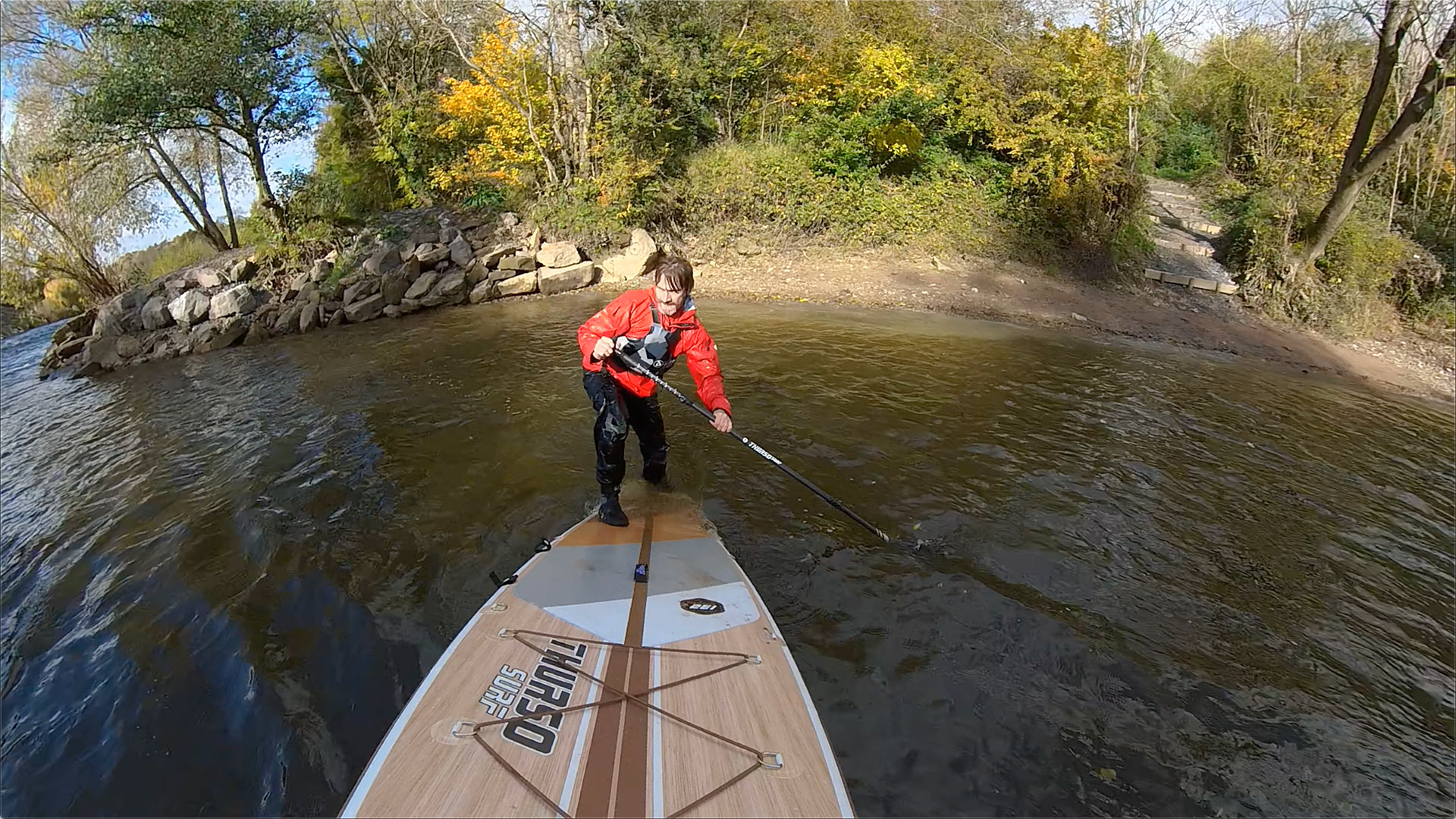
The ONE X2 reproduces colour very nicely.
Battery life on the X2 is remarkably good. I actually used up the space on my card long before the battery was due to run out. Certainly the much bigger battery is the reason for this. Insta360’s cameras are always quite power efficient and this is no exception. I was getting pretty close to the claimed 80 minute runtime.
The new waterproofing is an extremely welcome addition to the camera. You will still need the dive case if you want to obtain stitched 360 footage underwater, but it does mean that for surface based watersports you no longer have to worry about the camera taking a dunking. Out of the box I found that the lens coating was pretty good at shedding water droplets too. Additional lens guards will be available soon to allow the exposed lenses to be protected further, although I currently do not know if these will be water sealed or not. With any luck they will be close fitting to the original lens.
The form factor of the X2 does make it a bit more awkward for traditional action camera style use. It’s quite a size to use helmet mounted, so for the most part it is easier to fix to objects and film from the third person rather than for obtaining POV style shots.
Sound quality is a marked improvement with the new four mic ambisonic system. I’m still not totally a fan of the extra processing options for wind reduction etc, but I found the raw audio recording to be much improved over previous cameras. A new firmware is being released as this review goes to press, which promises to improve things even further in terms of processing. Although I have yet to be able to test this to check the improvements.
The camera has three anti-flicker modes. 50hz, 60Hz and Auto. Interestingly the camera, even in 60Hz mode tops out at 50p for 4K and 100fps for 3K, so I’m not sure how the flicker reduction is being achieved since most other cameras physically switch into a new mode with differing frame rates.
The ONE X2 is designed from the ground up to be able to do cool effects with the minimum of effort. The mobile app now has a huge number of theme presets that allow you to create extremely dynamic time shift/hyperlapse sequences with flowing camerawork that make it look like you took the footage with a drone, through to bullet time mixes, where the camera spins around the operator Matrix style.
On the subject of bullet time mode, the bullet time attachment for the selfie stick has been changed to a spring loaded rope system that flies out under centrifugal force. This new system means that with care, a *lot* of care, bullet time sequences can be recorded at different radii. I haven’t quite got the knack for this yet, but testing it at full extension can yield some cool results. My only word of caution would be to say to be extremely careful about people stood nearby, or objects. Oh, and be careful to bring the camera to a gradual stop otherwise you do risk clobbering yourself around the head!
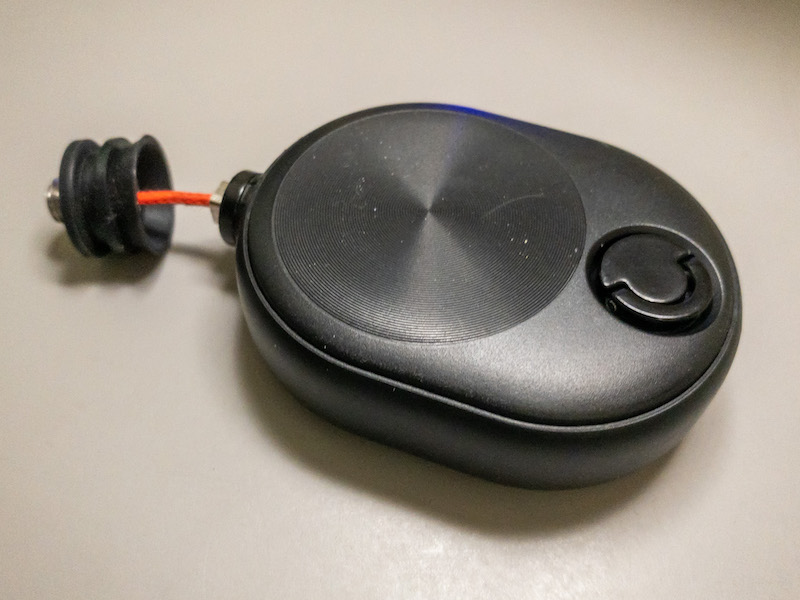
The new Insta360 ONE X2 Bullet Time cord.
In all the ONE X2 is incredibly easy to use, and this will be appealing to people who want to get up and running as quickly as possible.
Results
The picture quality of the ONE X2 is comparable to the ONE R. It utilises the same 5.7K total resolution, and quite possibly uses the same base sensor. Like the ONE R this produces a good, balanced image, with accurate colours, while still retaining a punch. If you want a much more punchy looking picture you can put the camera into Vivid mode to give a much more contrasty, saturated look. Alternatively there is a Log option, although as per most cameras of this type I think the standard profile is the best way to go to maximise the colour bandwidth available.
Even in bright light the ONE X2 handles highly saturated colours very well. If I had a gripe about the picture it would the same one that I have with the ONE R, and that’s that I feel that the digital edge enhancement is too aggressive. It really would be a fantastic thing to be able to have a sharpness setting in-camera that can be turned down. There are options in the mobile app to reduce sharpness, but this isn’t the same as doing it in camera since you are applying a softening filter to an effect that is baked into the footage.
The ONE X2 is particularly good at exposing for differing light in 360 mode. Passing under bridges on the paddle board for example posed no issues, with the camera handing both highlights and shadows well.
There is a stitch line visible in one shot in my test footage on the front of the paddle board. However I did not mount the camera very high so it was fairly close to the mounting point. If I had lifted the camera up higher this would have corrected itself. The narrower body of the X2 means that stitch lines are less visible as objects come closer than the thicker bodied ONE R.
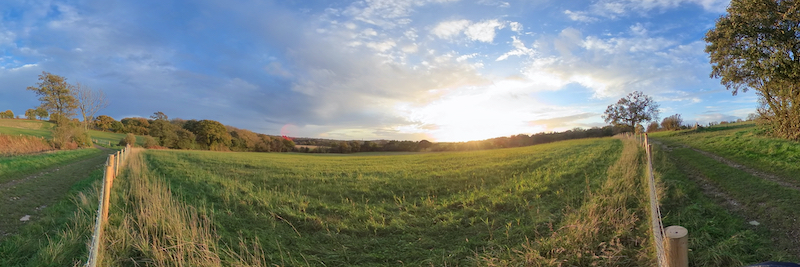
The power of PureShot in an InstaPano shot taken with the ONE X2.
One mode that I really liked using on the camera was Steady Cam mode. This works much more like a traditional action camera, but it allows you to simplify editing by capturing one angle. The stabilisation in this mode is absolutely fantastic. As you’ll see from my comical attempts to tail dip turn my SUP board in the video, the footage stays completely level, even when the board goes upside down. This should make for a really cool chest mounted camera on an MTB, not least because the barrel distortion can be corrected for while still retaining a nice wide POV.
The usual caveats remain with electronic stabilisation, which in the case of the X2 is handled in the desktop and mobile apps just like the ONE R. In low light the camera needs to use a slower shutter speed, which can introduce motion blur that affects the stabilisation effect.
Just like the ONE R if you are editing on a laptop or desktop computer you will need to import the footage into Insta360’s Desktop software first in order to convert it to an editing format of your choice. I tend to import the footage in and then go through the footage creating shots as if I was doing the camerawork in post. Which is effectively what you are doing. This can be a little clunky sometimes because the app doesn’t allow multiple in/out regions to be defined within a single clip. However you can keyframe camera movements and zooms to get dynamic movement into shots.
An alternative is to export your footage from the desktop app in flat equirectangular format and then import this into the GoPro Player app. This is a very responsive app and also lets you keyframe camera movements, including adding in motion blur. It won’t allow you to select a 2.35:1 aspect ratio like Insta360’s software, but it can be a lot quicker to work with.
The most processor intensive way is to import the footage into a package like Resolve and perform the reframing and camera moves there. However, while some really good results can be obtained by this, you really do need a powerful computer to do it without tearing your hair out.
As an aside I noticed that when I imported my 24p footage from the camera into Resolve it was in fact true integer 24fps and not 23.976.
Editing on mobile is much more streamlined, with full AI editing available and flawless object tracking. The sheer number of templates, tips and tricks, and general information and information makes the mobile app a great place to hang out. If you’re looking for inspiration after buying the camera it should be your first port of call.
Conclusions
The Insta360 ONE X2 is a very worthwhile update to one of the most popular 360 cameras on the market. It is extremely well built and it is simplicity personified in terms of operation. It’s also a great looking device with a really nice design aesthetic. The quality of the footage it produces is very good indeed, my reservations about the digital edge enhancement aside. The battery life is also incredibly good.
As per with the ONE R, the best aspect about using a 360 camera like this is that you can effectively have a multi-camera system just by mounting the camera in a single position. From the test video below you can see the different angles I obtained during a SUP trip without having to have the camera anywhere else other than the front of the board. It means you can relax a bit when doing trips like this and simply enjoy the environment rather than needing to be distracted by what the camera is doing. It's incredibly liberating.
The question many of you might be asking is whether to get the ONE X2 or to go for the ONE R. The two devices are, not surprisingly totally different in terms of approach. The ONE R is multiple cameras in one, so if you want to focus on 360 video in more general lifestyle situations then the ONE X2 is the device you need. However if your focus is on action sports where helmet mounting is a requirement, the ONE R will still be the camera to go for, although the ONE X2 is still very much capable of action duties when asked.
I’m constantly impressed at the way in which Insta360 constantly strive to improve their products, and so you can likely expect some great updates to the X2 as time goes on via firmware.
With the ONE X2 Insta360 has proven itself once again, and at $429.99 USD, or £429.99 it’s well worth a look as an alternative to the modular ONE R.
Watch my example footage below, all taken straight out of the camera with no grading or adjustment. The weather wasn't great with cloud and rain, but it shows that the camera copes well with less than ideal light.
*Update: The new firmware for the X2 improves the interface further, as well as making it clearer. It also adds in the ability to take PureShot stills, Instant Panorama shots, and H.265 recording in Steady Cam mode.
Tags: Production News Review


Comments